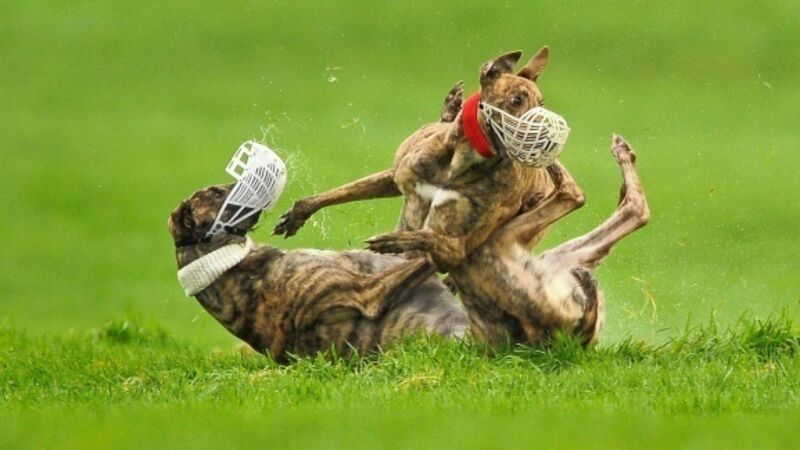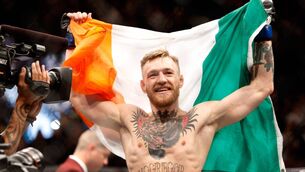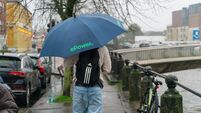Coursing — the debate that divides

Trying to assess a sport that divides opinions as dramatically as coursing is no straightforward matter. It is obviously not the same thing as divided opinions on, say, golf, where even people who hate golf recognise its right to exist.
Coursing is different. Its opponents wish to destroy its very existence. These wishes can be seen in speeches and pamphlets and newspaper articles and in bills brought before Dáil Éireann.
The words they use, the extremity of their language, underpins the extent to which they consider coursing as a form of barbarism, something medieval, something unfit for a modern world.
But what of those people who love the sport and will this weekend attend the National Coursing Finals at Clonmel? Do they recognise themselves in the words of those who condemn them?
Why do they come to hare-coursing, in their thousands, year-after year?
Is it tradition? Is it a sort of stubborn refusal to be cowed by those who would deem them to be cruel and savage in their sporting tastes?
Is it the sheer novelty of it all against the backdrop of a world increasingly homogenised and synthetic in its packaging of sporting experience?
Is it mainly the joys of a day out, the drink and the chat and the fun of being in the middle of people enjoying each other?
Is it the gamble or the chance to make money?
Or is it something more primal, something rooted in the tradition of the thrill of the chase – and, ultimately, the thrill of the kill?
In attempting to examine those questions and to evaluate the righteousness of those who despise coursing, there is no meaningful middle-ground, nothing by way of blurred lines where consensus can be shaped.
Before Christmas – in the middle stages of the current coursing season – the independent TD, Clare Daly, told the Dáil it was ‘derogatory to call it a sport’, and that it was, instead, ‘an industry out of control.’
She pointed to ‘barbaric’ reports of cruelty to hares – some of which was captured on camera – at coursing meetings in Limerick, Galway, Offaly and Laois.
Earlier in 2016, Daly had spoken in support of Maureen O’Sullivan TD’s bill to ban hare coursing from Ireland, which was brought before the Dáil in June. Back then, Daly derided the depiction of coursing as a family sport: ‘The people who assemble in a field for this are generally men but their numbers are dwindling.
’People can cod themselves all they like that this is a natural, rustic pursuit in which mammy, daddy, Ben and Jane go out together on a Sunday afternoon but they do not. It is generally supported by males and it is abhorrent that people stand around and cheer the massacre of another creature.’
By contrast, Joe Carey TD followed Daly and painted a vivid picture of his own family’s ongoing involvement (with a group of friends) in coursing – he spoke of a life in coursing in the way that other people might speak of a life lived in soccer or rugby or tennis: ‘One of my earliest memories as a young boy is of travelling to a trial in Miltown Malbay in the back of a car with two fawn greyhounds.
Coursing people go through their lives hoping to have a runner at the national meeting in Clonmel. For some this dream comes true but unfortunately some people never get the opportunity to see their own dog going to the slips in Powerstown Park.
‘Last year’s coursing season was very exciting for me as part of the Déise-Banner syndicate. We won the Dungarvan bitch trial stake and qualified for the national meeting in Clonmel with our dark brindle bitch called Clodagh River.’
And so, in this vein, the Dáil debate continued over several sittings. In some respects, it was entirely predictable, moving across expected territory with personal life-stories mixed in with heady rhetoric and self- serving guff. But it was also fascinating and worthwhile – as an exposition of two opposing world- views, it was revealing and admirable in its way.
History and tradition was central to what was discussed. For example, Clare Daly, said of coursing: ‘Let us be clear: this is not a tradition. At least, it is certainly not an Irish tradition. This barbaric pursuit was planted here by the English aristocracy, something with which I would have thought the great nationalists in Fianna Fáil might have had a problem. It is a cruel spectacle for their lordships, the first rules of which were drawn up under the reign of Queen Elizabeth I by the Duke of Norfolk.’
As with most political interpretations of history, Daly’s assessment of the past mixed reasonable fact with exaggeration and gross simplification.
So what is coursing’s history in Ireland?
In the first instance, it is true that the modern sport of coursing was imported from England where it had been made by the landed gentry. The first rules for coursing were put together by the Duke of Norfolk in the 1560s. Later, the first formal club to organise coursing was founded, apparently by Lord Orford, at Swaffham in the English county of Norfolk in 1776.
This was the age when people began the process of evolving their sporting practices into clubs and then into governing bodies. And so it was that in England by the 1880s there were more than 150 coursing clubs which were affiliated to a governing body, the National Coursing Club.
It is no surprise that these developments spread to Ireland: This is precisely what happened with every sport – or almost every sport – of note during these centuries. Indeed, the process by which coursing spread into Ireland was essentially the same as the manner of the spread of organised hunting and horseracing.
The elite landed gentry – whose world transcended the Irish Sea – took the sport and made it part of their lives in England’s oldest colony. It is for this reason that we can read of the Duke of Ormond coursing on The Curragh in Kildare in the 1660s. And, later, in the 19th century, the landed gentry began the process of founding coursing clubs, leading eventually to the establishment of the Irish Coursing Club in 1916.
To this extent, it is clear Clare Daly is right when she points to the influence of the landed gentry in making coursing and in spreading it into Ireland. But there is much more to the story than that. The first point to make relates to the universal history of coursing.
In its various forms, coursing is one of the world’s oldest sports and the use of greyhounds to race has evolved over millennia. It can be seen in the cultures of ancient Egypt and Rome and in the Mayan civilisations. Basically, as long as people have raced dogs they have used live animals as lure, notably hares.
Ireland was part of this world. It is reported that seven Irish dogs were sent to the games in Rome in the 4th Century AD. Later, the exploits of Gaelic chieftains such as Hugh O’Donnell and Shane O’Neill in hunting with dogs was celebrated in book and verse, and so were the exploits of the elite of the Irish church.
It is true the particular rules of coursing as they eventually evolved in Ireland were imported from England, but the native elite was already well accustomed to using its dogs in sport.
The second point relates to the relative importance of the landed gentry in all of this. That so many of the records of sport that survive from centuries ago relate only to the gentry – and that the gentry were so centrally involved in the formal establishment of coursing clubs – should not be understood as meaning the sport was theirs, and theirs alone.
Indeed, it is readily apparent the thirst for all forms of hunting-type sports extended across society. Even in the 19th-century spread of coursing across England, the landed gentry were only part of the story. In fact, a vital powerhouse of the sport was the northern moors were it was especially popular among farmers and colliers.
Equally, in Ireland, to present the sport as the sport of an elite is to completely deny the evidence of history which records huge crowds attending coursing events to see dogs compete from homes that were in no sense part of an elite.
But where Clare Daly offered much too narrow a view of the history of coursing and its evolution, she nonetheless made a relevant point about the transformation of society over time. When it comes down to it, it is impossible to deny the tide of history flows with those who wish to ban coursing. Over the past two centuries, a body of legislation has been introduced in Britain and Ireland which has redrawn the place of ‘blood sports’ on both sides of the Irish Sea.
This legislation has invariably been the product of campaigning by those who have opposed such sports and who wished to see them abolished. The root of such campaigns was not merely to protect animals but also to ‘civilise the poor’.
The unfailing bedfellow of the desire to save the animal was the desire, also, ‘to save the savage from himself’.
This led, for example, to laws being introduced in 1835 and 1849 banning bullbaiting and cockfighting. This process continued right into a new millennium when foxhunting was banned in England – as was coursing. The latter bans were brutally contested and have left a residue of bitterness that has not dissipated.
The Irish did not follow suit, of course. Nonetheless, new laws which have stopped short of abolition have changed the nature of hunting and of coursing. Just as in England, change in Ireland was driven by a series of campaigns whose pressure on government mounted inexorably – particularly from the 1970s on as government papers in the National Archives show.
A key figure in seeking to have hunting banned in Ireland was the north inner- city Dublin TD, Tony Gregory, and he was joined in his campaigns by other political notables such as Mary Robinson and Michael D. Higgins.
Their attempts to have the sport banned failed – although it is now banned in Northern Ireland, leaving the handful of clubs who remain there to travel south of the border to compete with the 80 or so southern clubs who continue to operate. The great change in the Republic of Ireland is the determination greyhounds must wear muzzles as they chase hares. This redrawing of the sport is considered to be not nearly enough by those who oppose its continued existence.
This is the case, not least, because of the capacity of dogs in certain instances to maul the hare to death or to kill it by tossing it into the air.
So why is it that hare coursing remains legal in Ireland? In one respect the answer is a narrow political one. The bill to ban hare coursing in 2016 was supported by just 20 TDs and was opposed by Fine Gael, Fianna Fáil, Labour and Sinn Féin. Their opposition was based in a clear political calculation which was, itself, rooted in an understanding of the value of coursing as an industry in certain communities in rural Ireland, apart altogether from the love which some people have for it.
More than banning coursing, indeed, the state essentially contributes to supporting it, by way of subvention to Bord na gCon, the semi-state body which oversees the activities of the Irish Coursing Club. In all, some €15m each year is given to fund the greyhound industry, of which coursing is a part. History would suggest that, in time, the state will eventually ban hare coursing.
After all, 11 bills seeking to abolish bullbaiting were introduced into the House of Commons between 1800 and 1835 before one was successfully passed. But what history also shows is banning a sport is only part of the matter. It remains the case that 180 years after cockfighting was banned in Britain and Ireland, the sport still survives on the margins of life with organised events a relatively frequent (albeit underground) practice. Similarly, the banning of coursing in England has not seen it disappear.
Reports of coursing meetings continuing to be organised in parts of England emerge from time to time. There should be no surprise in this. Deeply-rooted cultural practices do not just simply and inevitably disappear because a parliament votes in a particular way.
Ultimately, it may well be that eventually coursing is banned in Ireland, but that will not end the sport.
History may be with abolitionists in terms of their struggle in law – but it is with those who love coursing when it comes to the survival of their sport.











